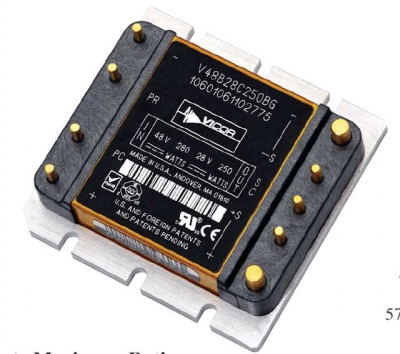IMA Battery Booster/Balencer/Charge controller.
|
 | |
Why do Insights get SOC recalibrations?
One cell out of the 120 cells in the pack reaches the point where the voltage starts to drop, and before the cell reverse charges and gets ruined, the IMA turns off assist, and force charges the pack to save it.This is a low capacity recalibration.
The one cell that has less capacity than the other 119 cells,rules the minimim end of the discharge curve, even though the rest of the cells could have a lot of juice left in them. A perfect pack only has 4 useable AH of capacity, a weak cell at half capacity would reduce the pack useable energy to 2 ah.
I have a new idea on how to do the booster pack. instead of using 5 parallel 48V to 170V 3A dc/dc converters for charging, as I had originally planned, I will now use 10 - 48V to 16V 16.5A dc/dc converters. These are standard half brick power supplies that can do constant current mode with a small current shunt and auxiliary circuit. The supplies are fully isolated so that the inputs can be in parallel while the output is in series. A small Microprocessor based voltage/temp/SOC measuring circuit will control each of these supplies. Every two subpacks will be cared for by this type system, 10 in all. Each BCM node will be connected to a master BCM via an optically isolated serial buss. The master will decide if one of the packs is dropping low, and will instruct that microprocessor to charge longer. The modules cannot be turned on an off very fast, so the charge may be full on for 10 seconds, and off for 10 to give 50% average charge. A weak subpack may get full charge 100% of the time to boost it back up relitive to the others, avoiding the recal.
The center tap between the two 6 cell parts of the sub system could also be monitored, and the charge could be shunted to either or both of the subpack . The whole pack could be charged at up to 2500W with all the supplies on at once, therefore allowing a higher use of the electric side of the hybrid.Increasing MPG to hopefully >100MPG. The ability to provide 16A at 144V from the 48V booster pack, allows a constant application of the electric drive at low power.
If the main pack is allowed to charge right up to near full, and the boost is turned off, you are back to the stock MIMA equipped Insight. When the big 48V battery dies, you loose active subpack balancing, and are back again to the standard MIMA equipped Insight, but are 250 LBS heaver.
Then we add the EV only mode, but thats after we get this battery stuff ironed out.
|
|